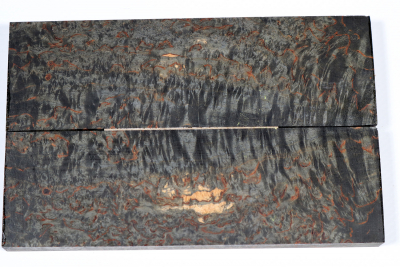The Karelian masur birch (Betula pendula var. carelica) is found in the border region between Russia and Eastern Finland, the so-called Karelia. It is simply THE classic wood for Nordic knives of all kinds, such as Sami knives. It is not suitable for larger objects because of its rather small dimensions (the trunks usually have a diameter of only 10-20 cm). Well-grained logs are relatively rare and sought after. The typical appearance in the form of brown veins is unique and does not occur in any other burl wood.
The birch also plays a large and important role in the customs of all Nordic and Scandinavian peoples. It was dedicated to the goddess Freya. The mythological significance of the birch as the "tree of protection" should also be emphasised. The birch tree is also considered the tree of light, and superstition has it that it attracts lightning, which is why it is rarely found on farms. Customs such as the Maypole have survived to the present day.
This knife scales has been stabilized with Plexiglas® (PMMA) and fully penetrated. It will no longer absorb water, is dimensionally stable, and will no longer crack. It can be easily worked, but it does not react well to excessive heat during processing, so take care when sawing, drilling and grinding. (When it gets very hot, the PMMA begins to smear.) Very easily worked with sharp tools, but the odor stays within limits and is negligible. The stabilizing gives this block excellent hardness, durability, and stability. It is therefore suitable for heavy duty applications or in areas that get wet, such as outdoors.
Dimensions: approx. 125 x 40 x 10 mm
You will get the shown pair of scales!
The pair of scales are dry and can be processed immediately.
The scales is sanded and coated with a layer of shellac.
This allows you to see exactly the color you will obtain.
Finely grained wood may contain imperfections such as open knots, bark inclusions, or cracks that are typical of the species. These flaws come from the way the tree has grown and are completely natural. They can usually be filled with low-viscosity cyanoacrylate (super glue) and wood dust.

